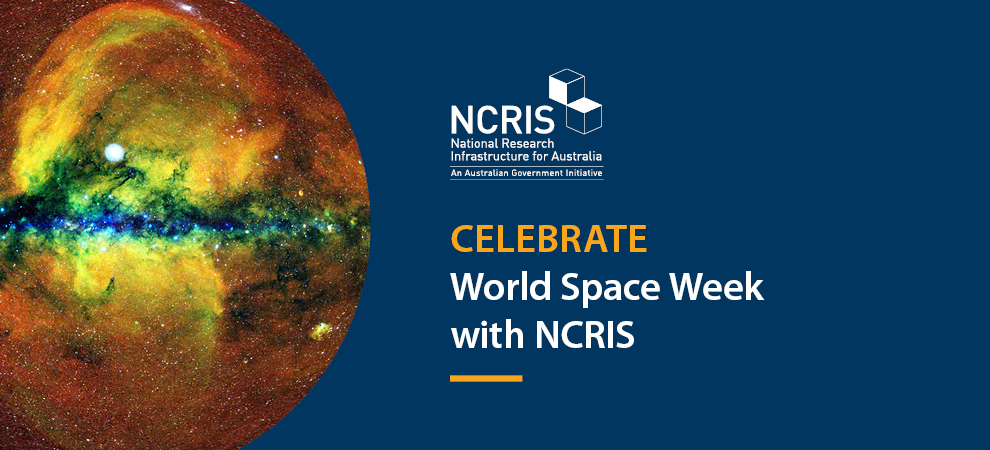This week we’re celebrating World Space Week. Running from 4–10 October 2023, World Space Week is an international celebration of science and technology.
Each year, since its inception in 1999, the world has celebrated World Space Week. It celebrates human innovation and exploration, as well as commemorating two events.
- October 4, 1957: Launch of the first human-made Earth satellite, Sputnik 1
- October 10, 1967: The signing of the Treaty on Principles Governing the Activities of States in the Exploration and Peaceful Uses of Outer Space, including the Moon and Other Celestial Bodies.
During World Space Week, we highlight the work of the National Collaborative Research Infrastructure Strategy (NCRIS) in space research infrastructure. NCRIS infrastructure supports deepening of our understanding of space and the universe, and two examples are below.
A gravitational map of the Southern skies
One of the biggest struggles in understanding the night sky is sometimes there’s too much information gathered. This doesn’t sound like a problem, until you consider that the raw data gathered can exceed more than 100 terabytes a day. This can cause backlogs in computing all of the information.
The Astronomy Data and Computing Services (ADACS) – delivered by Swinburne University of Technology and Curtin University with the Astronomy Australia NCRIS project – helps to remove these bottlenecks that were creating barriers to scientific discovery for astronomers.
Swinburne’s Associate Professors Edward Taylor and Michelle Cluver are currently working to make a gravitational map of the Southern skies using the European Southern Observatory’s VISTA telescope in Chile. Using ADACS means they can process and understand their data more efficiently and effectively. This map will help future researchers gain a deeper understanding of our universe.
Australian tech exploring the skies
Have you met Hector? Hector is a type of spectrograph at Siding Spring Observatory. What is a spectrograph you may ask – it’s an astronomical instrument that allows scientists to understand wavelengths of light emitted from objects in space. Hector is a special kind of spectrograph that aims to conduct a redshift galaxy survey of up to 15,000 local galaxies.
A ‘redshift’ is when an object such as a galaxy is moving away from Earth. The light from the object is stretched or 'shifted' towards the red part of the colour spectrum. A redshift reveals information such as how a galaxy is moving compared to us.
Hector was designed and built by the Astralis Instrumentation Consortium, a combined team of astronomy experts across three major Australian universities. Astronomy Australia Limited (AAL) is also a member of the consortium, providing funding support through NCRIS.
This research is supported by the Department of Education through NCRIS. NCRIS is a network of 24 projects which provide Australian researchers with access to the tools, equipment, data, and services they need for world-class research.

